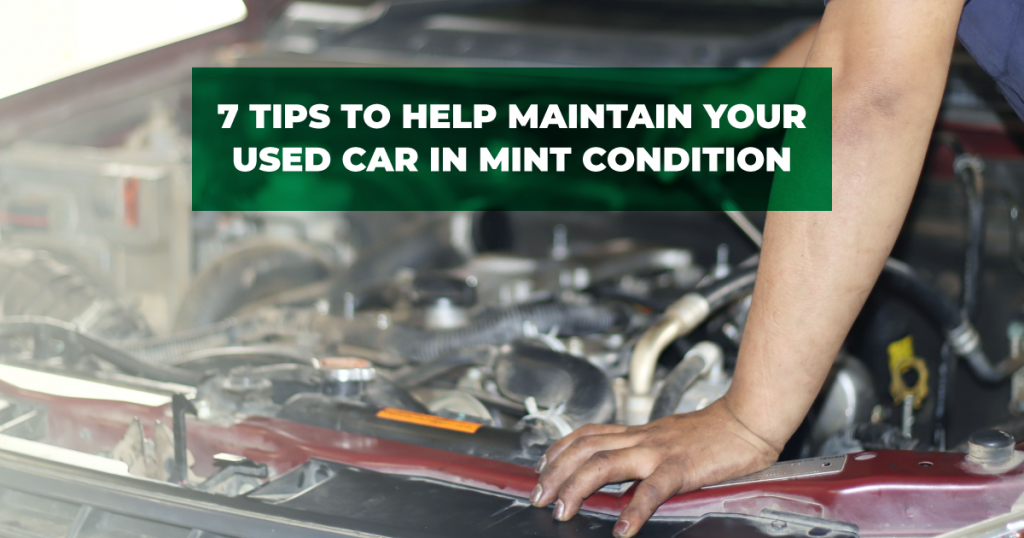The cost of maintaining a car is quite high. You do not want to drive around with worn-out tires or a car that emits black exhaust smoke. Not only is this not safe for you but also for other road users.
A used car can be very fragile. Since you are not the first owner, you can never be too sure about its underlying issues. Therefore when you buy a second-hand car, have a skilled mechanic look at it before you start using it. Your mechanic will guide you on simple DIY maintenance tips that can also help you maintain your car in great shape.
We have listed below a couple of tips you can use to maintain your car.
1. Check the fluids frequently
One of the most important things to check under your car’s hood is the engine oil. Does it need changing or topping up? If so, do it urgently. When the car’s engine oil is low, lubrication of essential engine components stop.
This causes clunking and grounding sounds and can lead to breakage of the rods. This will ultimately cost you a lot of money to repair. You also need to check on the transmission fluid, brake fluids and engine coolant.
2. Check the brakes, safety belts and car’s batteries

The braking system is probably one of the most crucial parts of your car. Your safety heavily relies on your car’s ability to brake successfully. Be on the lookout for squeaking sounds whenever you are braking and alert your mechanic. This could be a sign of worn-out brake pads.
Your safety is paramount. You need to check the condition of the safety belts. Do they function properly? Do all the seats have belts? If not, make an appointment to purchase good quality safety belts for your car and have them properly fitted by a professional. Remember, not wearing a safety belt is not only a traffic offence but also risky.
Take a close look at the battery. Does your car take long to start or fails to start at all? Does your battery have corrosion build up? When was the last time you checked the battery fluid?
Replace A completely dead battery, otherwise, your car won’t move at all. If it’s still functional, clean the battery terminal using anti-corrosion fluids, charge it and refill the fluids. This will prevent any further damage and save you from having to buy a new one.
3. Check the warning lights indicators
Cars come fitted with high tech sensory warning systems. When something is wrong with your car, your car will give you a sign. However, you may miss the warning sign if you do not know the meaning.
Familiarise yourself with the different warning lights on your dashboard and be quick to inform your mechanic if something is a miss. For instance, if the fuel light is on, it could mean you are running low on fuel and need a refill.
It could also mean that your fuel tank is leaking. The brake lights could mean that the parking brakes are engaged or that the braking fluid is low. Therefore, the warning lights are important for ensuring you are always safe.
4. Take care of the car’s exterior and interior
Does the exterior of your car look appealing? Is the paint chipped? Are the tyres worn out? What about the windscreen, is it cracked? Are the headlights missing or are they dim? If you answered yes to any of the above, it’s time to have your car professionally detailed.
Look around inside your car. If you still have mud from last week, food crumbs and it smells musky, clean it. Have every nook and corner scrubbed including the car’s underbelly. Besides, detailing your car frequently also improves your car’s resale value as it appears well taken care of.
5. Check the window’s functionality
When buying a car, you may be too excited to notice things like the windows. However, you need to find out if they function properly. Do they easily roll up and down? Are they damaged or cracked? If anything is off, have it fixed. The worst thing that could happen is if it starts to rain and your windows jam.
6. Check if your car tyres are the right size and in good condition
Every car comes with a tyre inflation guide from the manufacturer. The guide is to ensure you do not drive around with deflated tyres which can cause rim damage. Over-inflated tyres can cause a tyre burst.
Whenever you visit the fueling station, check the tyre’s pressure and adjust them accordingly. Check the extent of the wear and tear of the tyres. If the tyres have no treads anymore, replace them with new ones. The treads help your car maintain a good grip on the road and prevent sliding especially during the rainy season.
7. Check your car’s exhaust system
Your car’s exhaust system usually emits gases as a result of engine combustion. The colour of the smoke from the system is an indicator of the condition of your engine.
If the colour is black or navy blue, it may be a cause for alarm. Contact the mechanic immediately. A healthy car emits light or thin white exhaust smoke. Usually, this is just condensed water that may have accumulated in the exhaust pipe.
Parting Shot
A well-maintained car hardly breaks down thus reducing trips to the mechanic. Always be on the lookout for warning signs of a breakdown. Nub them before they get worse. A well-maintained car can easily be re-sold in future. Therefore you should treat your car as an investment you may want to sell in the future.
